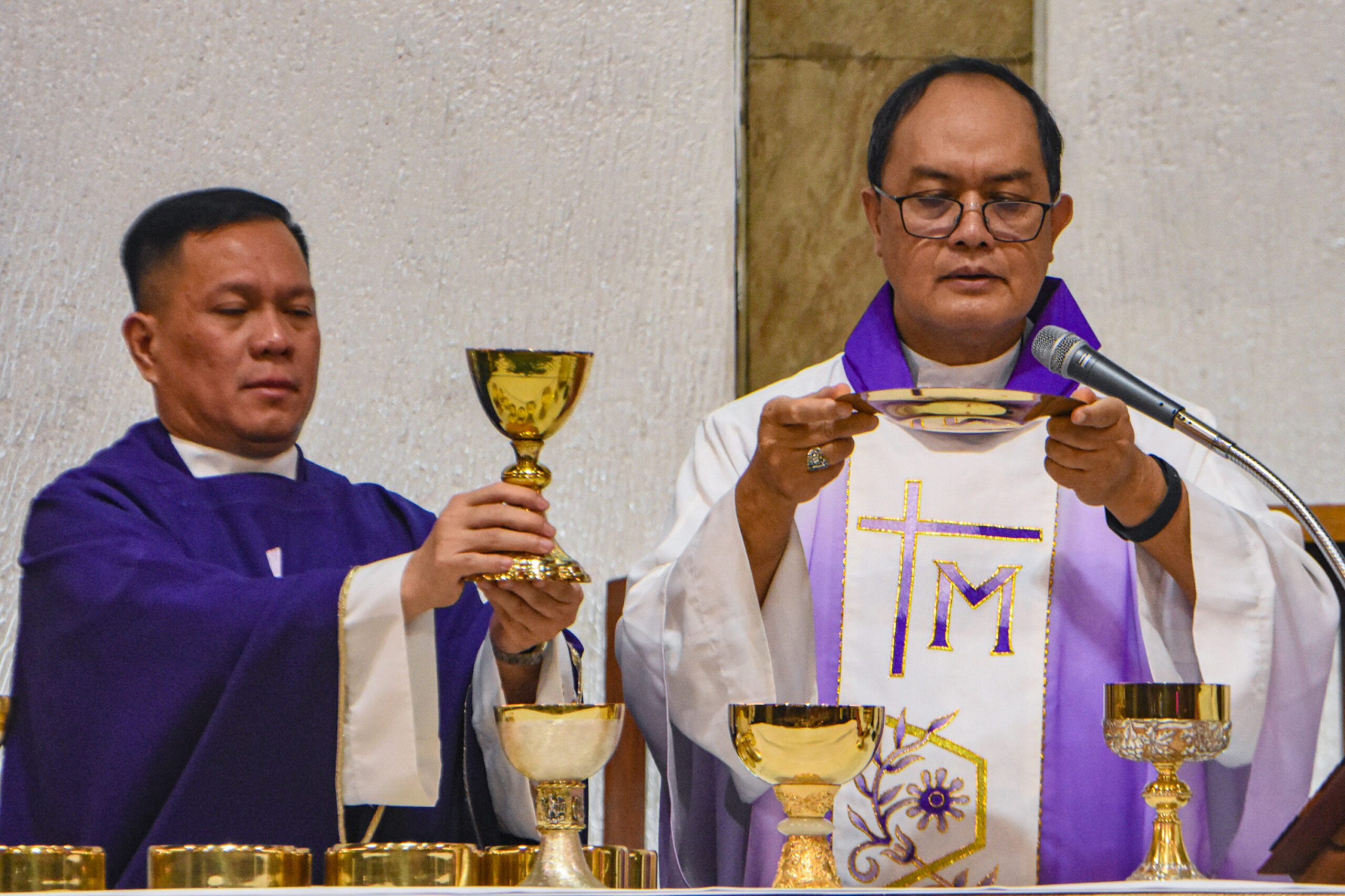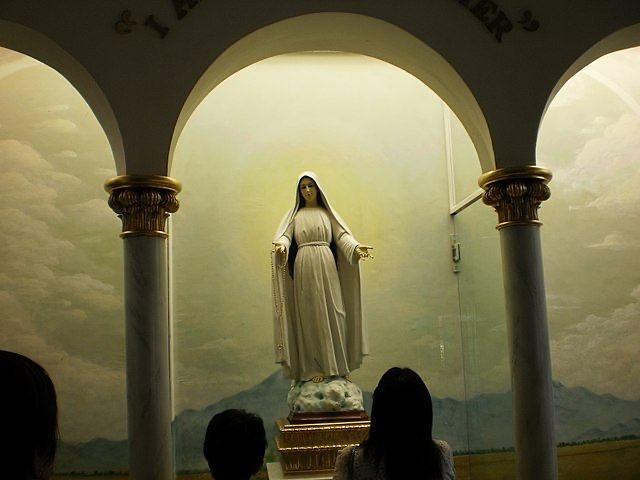SUMMARY
This is AI generated summarization, which may have errors. For context, always refer to the full article.

MANILA, Philippines – The Catholic Bishops’ Conference of the Philippines (CBCP) plans to “revisit,” not reopen, the case of the alleged 1948 apparition of the Virgin Mary in Lipa City, Batangas, which the Vatican rejected as not supernatural.
The decision stemmed from “lapses in communication” when the 1951 Vatican decree on the Lipa apparition was supposed to be transmitted to Filipino Catholics seven decades ago.
It was Cardinal Gerhard Müller, then-prefect of the Congregation for the Doctrine of the Faith (now the Dicastery for the Doctrine of the Faith or DDF), who pointed out such communication errors in his 2015 decree that reiterated the 1951 decision.
“The CBCP has deemed it necessary to ‘revisit the case’ (not reopen investigation) because, as admitted by the 2015 letter sent by Cardinal Müller, some lapses in the communication of Rome’s decision had been committed in the process,” CBCP president Bishop Pablo Virgilio David told Rappler.
The CBCP has consistently upheld the 1951 Vatican decree on the Lipa apparition, with David emphasizing on May 27, 2023, that “Rome has spoken.”
In a separate letter to CBCP members on February 19 this year, David reiterated an advisory by the Vatican that it should now be the CBCP that “discerns what is necessary for the good of the faithful” regarding the Lipa apparition. This is because, according to the Vatican, “the non-supernatural nature of the aforementioned events has been clearly established.”
Vatican decree revealed
The Lipa apparition made headlines this week after the Archdiocese of Lipa announced on Tuesday, March 19, that the Vatican has finally published its 1951 decree on the Lipa apparition, ending decades of speculation by devotees on whether the document existed.

The decree’s supposed nonexistence was also the basis of a perjury complaint filed by Harriet Demetriou, a Marian devotee and a retired justice of the anti-graft court Sandiganbayan, against Dominican exorcist priest Father Winston Cabading.
Demetriou claimed that Cabading lied under oath, or committed perjury, when he claimed in a separate case that the 1951 decree existed. This perjury complaint was junked by a Makati City prosecutor on January 23, but Demetriou is appealing the case.
The other case, the one that brought about the perjury complaint, was an alleged violation of a 1930s law against “offending religious feelings.” Demetriou had sued Cabading in December 2022 for being a rabid critic of the Lipa apparition – a case that resulted in Cabading’s arrest and detention for one weekend in mid-May 2023.
The Lipa apparition has long been a source of tension between devotees and the Catholic hierarchy in the Philippines.
In this alleged apparition, the Virgin Mary reportedly appeared to a 21-year-old Carmelite postulant named Sister Teresita Castillo in Lipa City for 15 days beginning on September 12, 1948. The visions were reportedly accompanied by a rain of rose petals, which many devotees attest to have witnessed themselves.
The Virgin Mary under the title of Mediatrix of All Grace, who allegedly appeared to Castillo, is still honored by devotees to this day. The Mediatrix of All Grace is also known as Our Lady of Lipa.
The Vatican, however, in a decree approved by Pope Pius XII on March 29, 1951, said that the alleged Lipa apparition, “after serious examination, turns out not to have a supernatural origin and character.” The Vatican based its decree on an admission of Castillo’s superior, Mother Mary Cecilia of Jesus, that she deceived Catholics about the supposed miracle in Lipa.
‘Lapses in communication’
The 1951 decree stated that “the apostolic delegate is to authorize the apostolic administrator to issue a document from the Curia,” or the Vatican bureaucracy, communicating this decision.
An apostolic delegate is a Vatican representative who acts like a nuncio but without diplomatic status. An apostolic administrator is a caretaker of a Catholic diocese in the absence of a full-time bishop.
David said the apostolic delegate to the Philippines at that time, Archbishop Egidio Vagnozzi, did not “authorize the apostolic administrator to issue a document from the Curia” as the 1951 decree instructed.
Instead, Vagnozzi formed a six-member panel to issue a document stating the decision of Rome. The commission included Bishop Rufino Santos, then the apostolic administrator of Lipa.
“The lapse was, the committee issued a statement owning the decision and making no mention that that was actually the decision of the Sacred Office in Rome (now called DDF),” said David.

The six-member commission, in particular, “issued its own decree signed by the members, dated April 11, 1951, bearing the basic content of the document from Rome, but without mentioning that the decision had come from Rome, that it had been approved by the Pope, and that it was final and definitive.”
Santos himself issued his own decree on April 12, 1951, said David. In this decree, Santos banned devotion to Our Lady of Lipa, but concluded with the phrase “until a final decision on the matter will come from the Holy See.” According to David, this means “he was not made aware that the decision had come from Rome.”
“It was on account of these lapses in communication that the CBCP thought it wise to revisit and reconstruct the turn of events, starting with obtaining an authenticated photocopy of the decision made by the Sacred Office in 1951, which we did not have in our CBCP files,” said David.
Rappler sought David for clarification on the purpose of correcting these communication lapses if the Vatican has released a copy of the 1951 decree, which the Archdiocese of Lipa recently communicated to the Catholic faithful, and which is considered final and definitive.
David has not responded to this query as of posting time.
Final word from the Vatican
The current archbishop of Lipa, Gilbert Garcera, said in a January 31 meeting on the Lipa apparition that the CBCP discussed the issue in its plenary assembly earlier that month.
One of the resolutions during the plenary assembly was “that the CBCP will request the Dicastery [for the Doctrine of the Faith] the possibility of ‘revisiting’ the case,” according to minutes of the January 31 meeting convened by Garcera.
“It is to be noted that this should not be construed as reopening the case,” the minutes said.
In a separate letter to David dated October 6, 2023, current DDF prefect Cardinal Victor Fernandez noted that dissemination of the image of Mary related to the Lipa apparition “can easily confuse the faithful around them.” Therefore, “propagation is discouraged unless there are other pastoral considerations” that the CBCP would “deem necessary to evaluate.”
“On the other hand, the Holy Spirit can work in the faithful and do good even through phenomena that are not authentically supernatural. Therefore, it is good that, along with the pronouncement by the bishops, those who may have approached Christ and the Church through devotion to that Marian image are also encouraged to grow in their Christian experience through other mediations,” said Fernandez in this letter originally in Italian.
“Finally, since the non-supernatural nature of the aforementioned events is now clearly established, it seems appropriate for the future, unless further interventions by this Dicastery are deemed necessary, that your episcopal conference discerns what is necessary for the well-being of the faithful regarding the aforementioned events,” the cardinal said. – Rappler.com
Add a comment
How does this make you feel?
![[The Wide Shot] Peace be with China](https://www.rappler.com/tachyon/2024/07/wideshot-wps-catholic-church.jpg?resize=257%2C257&crop=311px%2C0px%2C720px%2C720px)
![[OPINION] A critique of the CBCP pastoral statement on divorce](https://www.rappler.com/tachyon/2024/07/TL-cbcp-divorce-statement-july-19-2024.jpg?resize=257%2C257&crop=285px%2C0px%2C722px%2C720px)


![[The Wide Shot] Was CBCP ‘weak’ in its statement on the divorce bill?](https://www.rappler.com/tachyon/2024/07/cbcp-divorce-weak-statement.jpg?resize=257%2C257&crop=258px%2C0px%2C719px%2C720px)
There are no comments yet. Add your comment to start the conversation.